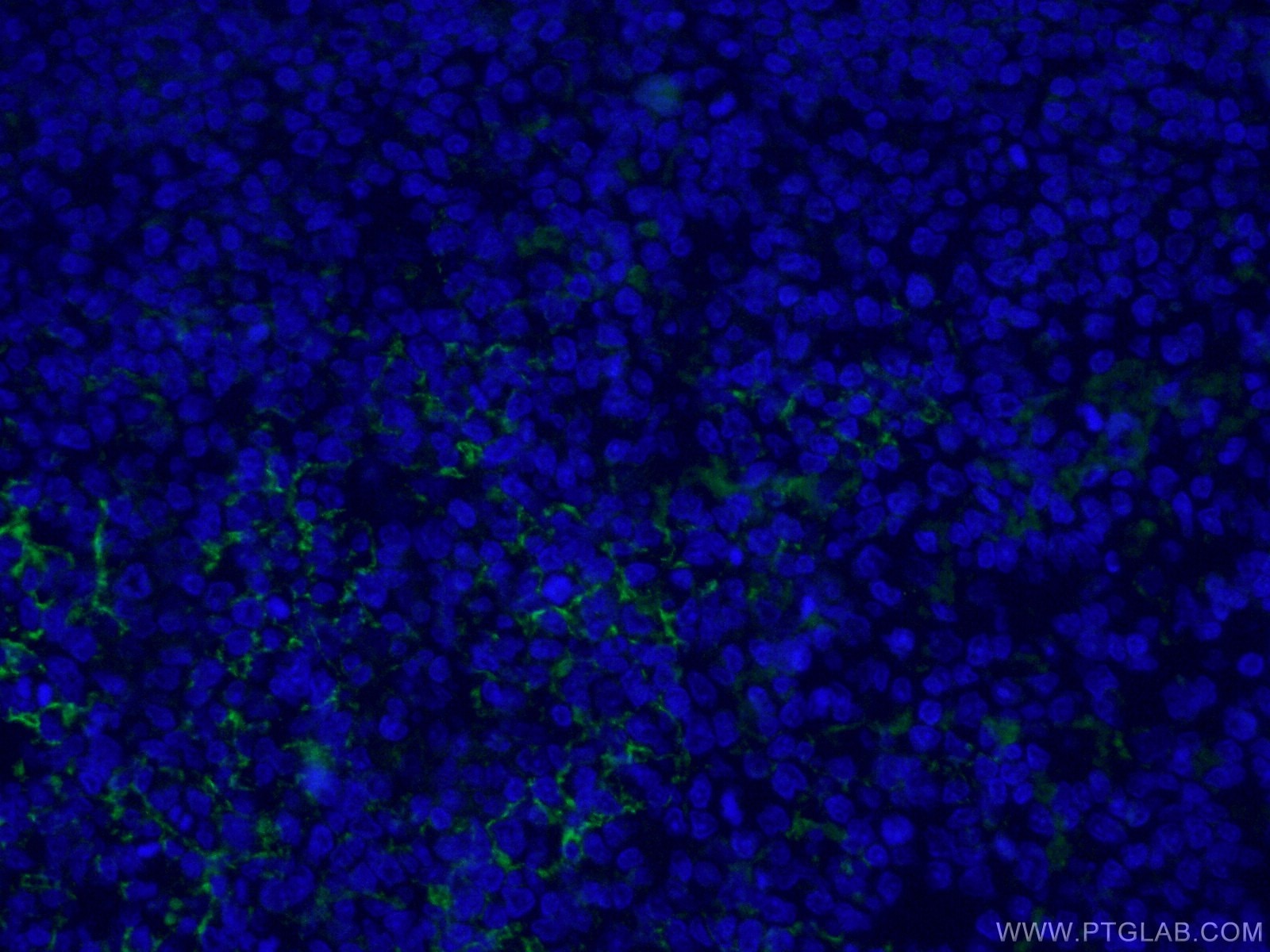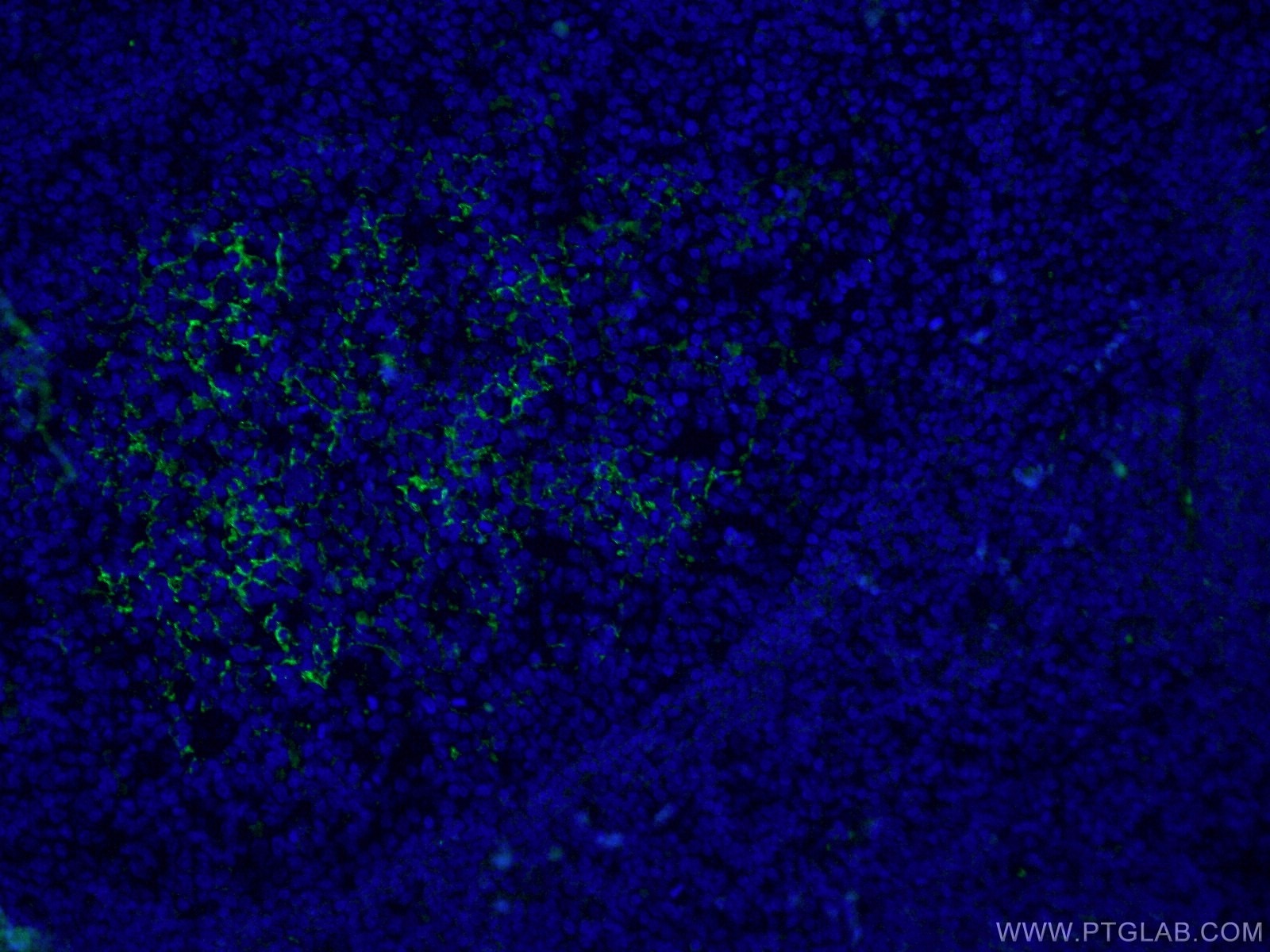Tested Applications
| Positive IF-P detected in | human tonsillitis tissue |
Recommended dilution
| Application | Dilution |
|---|---|
| Immunofluorescence (IF)-P | IF-P : 1:50-1:500 |
| It is recommended that this reagent should be titrated in each testing system to obtain optimal results. | |
| Sample-dependent, Check data in validation data gallery. | |
Product Information
CL488-60208 targets CD23 in IF-P applications and shows reactivity with human, mouse samples.
| Tested Reactivity | human, mouse |
| Host / Isotype | Mouse / IgG2a |
| Class | Monoclonal |
| Type | Antibody |
| Immunogen |
CatNo: Ag0425 Product name: Recombinant human CD23,FCER2 protein Source: e coli.-derived, PGEX-4T Tag: GST Domain: 48-248 aa of BC064417 Sequence: DTTQSLKQLEERAARNVSQVSKNLESHHGDQMAQKSQSTQISQELEELRAEQQRLKSQDLELSWNLNGLQADLSSFKSQELNERNEASDLLERLREEVTKLRMELQVSSGFVCNTCPEKWINFQRKCYYFGKGTKQWVHARYACDDMEGQLVSIHSPEEQDFLTKHASHTGSWIGLRNLDLKGEFIWVDGSHVDYSNWAPG Predict reactive species |
| Full Name | Fc fragment of IgE, low affinity II, receptor for (CD23) |
| Calculated Molecular Weight | 321 aa, 36 kDa |
| GenBank Accession Number | BC064417 |
| Gene Symbol | CD23 |
| Gene ID (NCBI) | 2208 |
| RRID | AB_2883121 |
| Conjugate | CoraLite® Plus 488 Fluorescent Dye |
| Excitation/Emission Maxima Wavelengths | 493 nm / 522 nm |
| Form | Liquid |
| Purification Method | Protein A purification |
| UNIPROT ID | P06734 |
| Storage Buffer | PBS with 50% glycerol, 0.05% Proclin300, 0.5% BSA, pH 7.3. |
| Storage Conditions | Store at -20°C. Avoid exposure to light. Stable for one year after shipment. Aliquoting is unnecessary for -20oC storage. |
Background Information
CD23, also known as low affinity immunoglobulin epsilon Fc receptor, is a transmembrane glycoprotein present on a subpopulation of B lymphocytes in germinal centres, EBV-transformed B-lymphoblastoid cell lines, follicular dendritic cells, and a subpopulation of peripheral blood cells. CD23 has essential roles in the regulation of IgE production and in the differentiation of B-cells. And the antibody is conjugated with CL488, Ex/Em 488 nm/515 nm.
Protocols
| Product Specific Protocols | |
|---|---|
| IF protocol for CL Plus 488 CD23 antibody CL488-60208 | Download protocol |
| Standard Protocols | |
|---|---|
| Click here to view our Standard Protocols |






